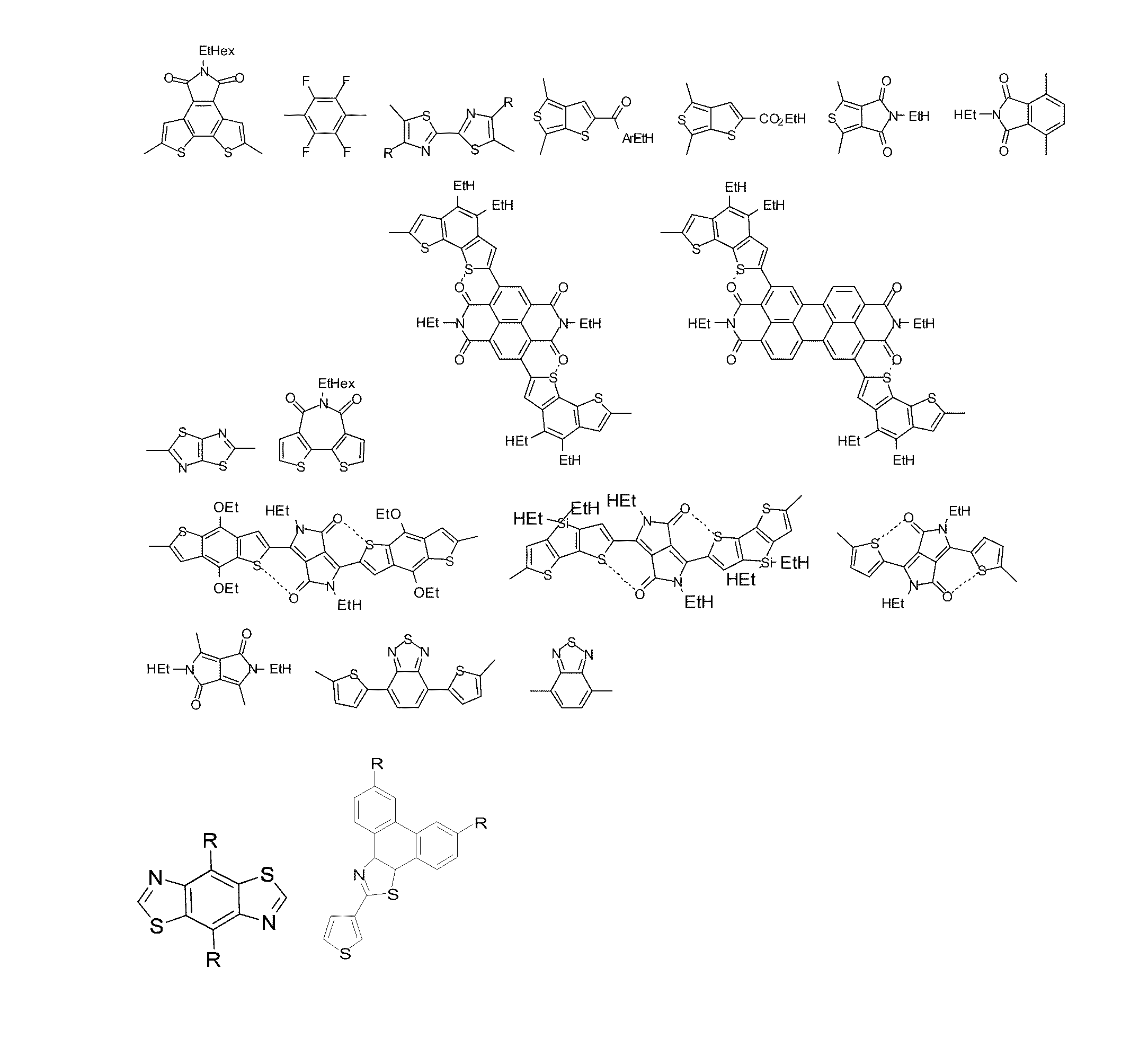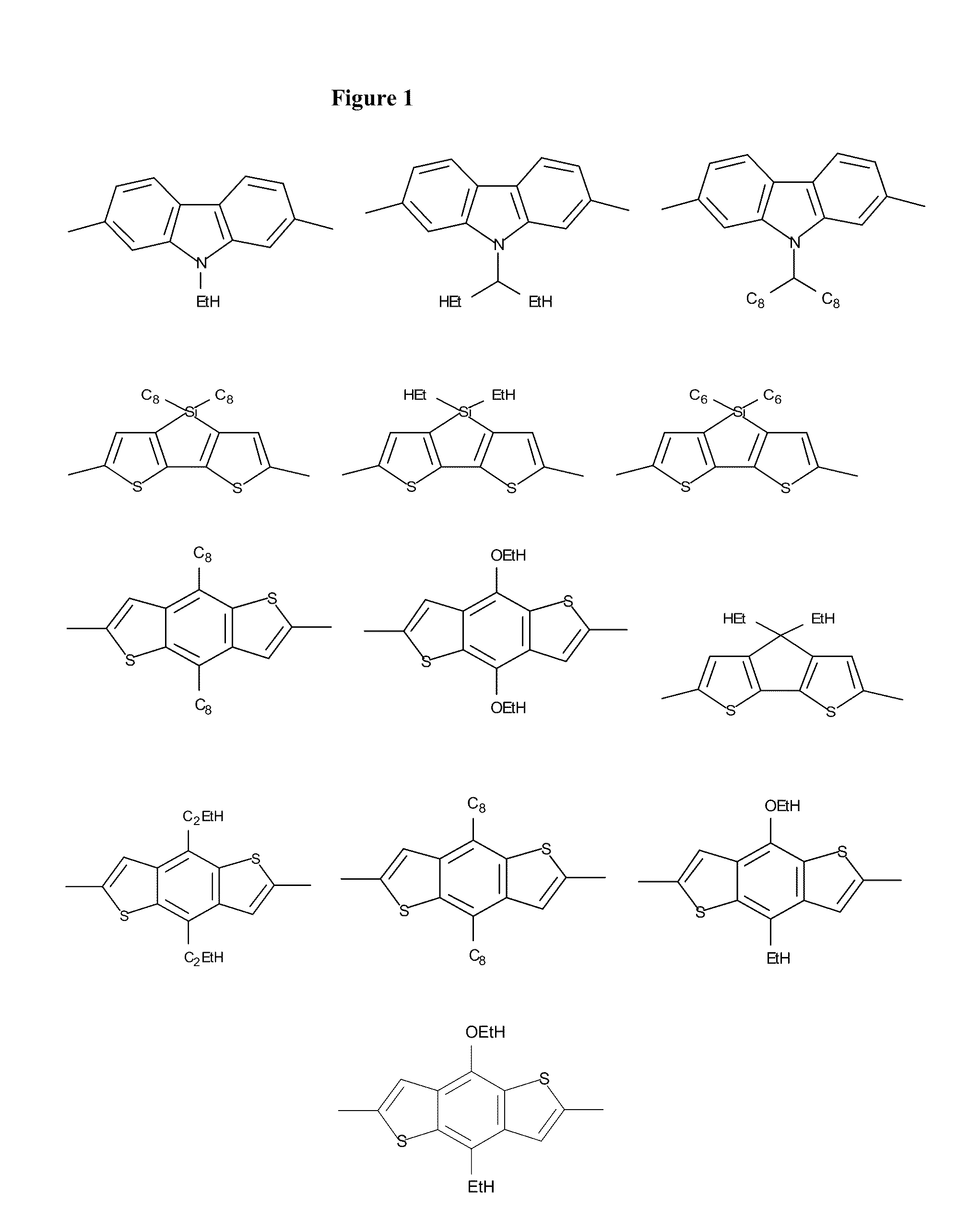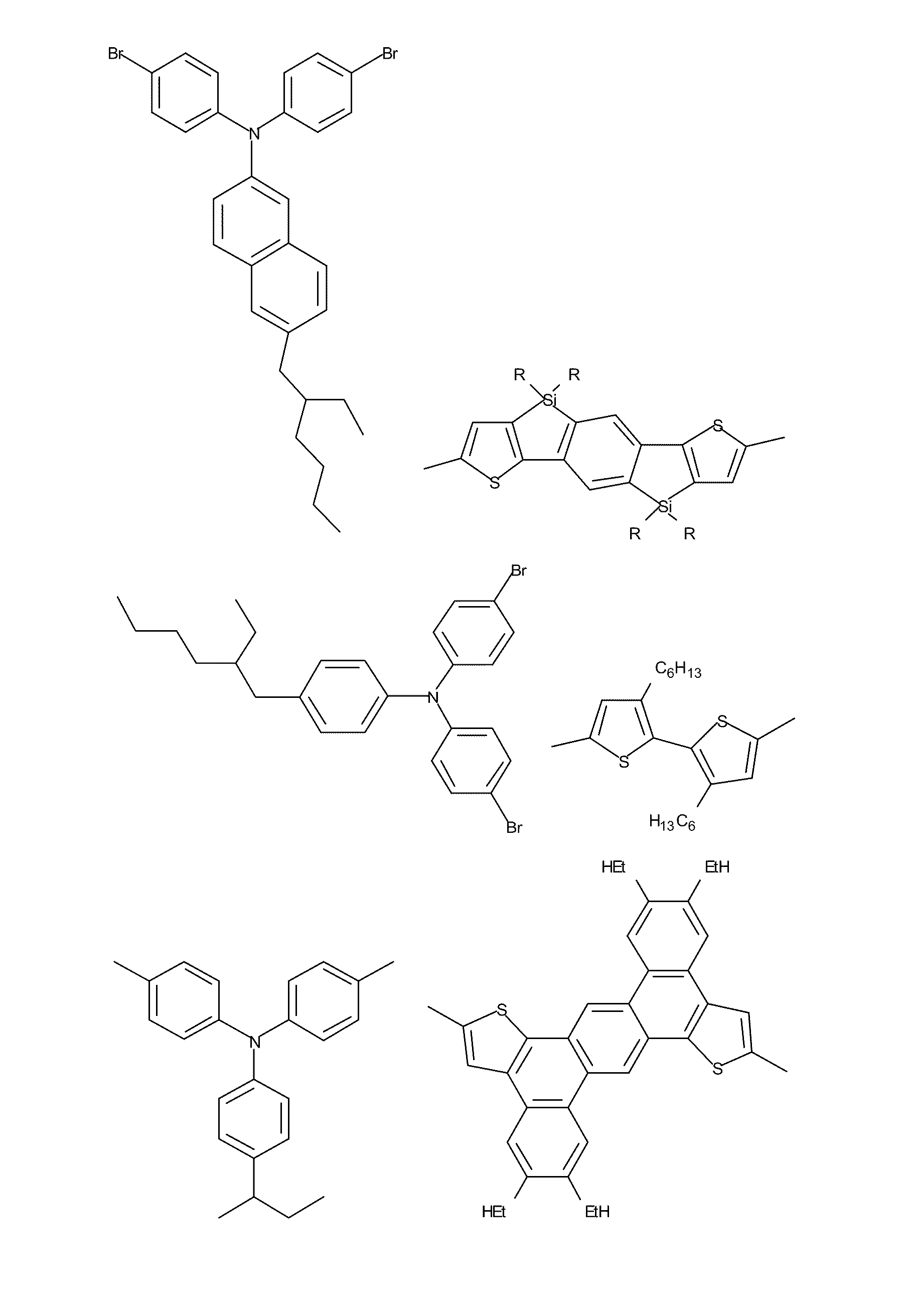Organic electronic devices and polymers, including photovoltaic cells and diketone-based polymers
a technology of organic electronic devices and polymers, which is applied in the direction of diketopyrrolopyrrole dyes, other domestic articles, organic chemistry, etc., can solve the problems of sacrificing one property, difficult to achieve the combination of properties, etc., and achieves good photovoltaic performance, high molar absorption, and improved lifetime and environmental stability
- Summary
- Abstract
- Description
- Claims
- Application Information
AI Technical Summary
Benefits of technology
Problems solved by technology
Method used
Image
Examples
performance embodiments
Additional Embodiments Including High Performance Embodiments
[0221]Some embodiments provide particularly high performance in, for example, photovoltaic and / or solar cell testing including efficiency and open circuit voltage. See, for example, working examples 14-22 and working example 20 below and devices prepared therefrom and polymers used in the devices. The embodiments comprise, for example, monomers, oligomers, polymers, inks, devices, and methods of making and using same.
[0222]For example, one embodiment provides a device comprising: at least one cathode; at least one anode; at least one photovoltaic active layer disposed between the cathode and anode and comprising at least one p-type material and at least one n-type material, wherein the p-type material comprises at least one polymer comprising a donor-acceptor structure, comprising a first acceptor backbone moiety:
and wherein the donor comprises at least one benzodithiophene structure, and the polymer comprises at least one...
example 1
2,6-bis(trimethyltin)-4,8-diethylhexyloxybenzo[1,2-b;3,4-b]dithiophene
[0241]
[0242]A dry 500-mL three-neck flask was flushed with N2 and was charged with 4,8-diethylhexyloxybenzo[1,2-b;3,4-b]dithiophene (6.9 g, 0.015 mol) and diethyl ether (Et2O) (150 mL, 0.1 M) via deoxygenated syringe. The reaction flask was cooled to −78° C. and a 1.7 M solution of tert-butyllithium in hexanes (23 mL, 0.038 mol) was added dropwise via deoxygenated syringe. After 30 minutes of stirring at −78° C., the solution was chilled to 0° C. and stirring was continued for 5 minutes, at which point the reaction mixture was chilled back to −78° C. A 1 M solution of thrimethyltin chloride in THF (39 mL, 0.038 mol) was added to the reaction flask dropwise and stirring continued for 1 hour at −76° C. The cooling bath was removed and the reaction mixture was allowed to warm to ambient temperature. As the reaction was completed, cool DI water (20 mL) was slowly added to the reaction flask. Then, the reaction mixture...
example 2
4,4′-bis(2-ethylhexyl)-5,5′-bis(trimethyltin)dithieno[3,2-b:2′,3′-d]silole
[0244]
[0245]A dry 500-mL three-neck flask was flushed with N2 and was charged with 4,4′-bis(2-ethylhexyl)dithieno[3,2-b:2′,3′-d]silole (10.4 g, 0.025 mol) and THF (250 mL, 0.1 M) via deoxygenated syringe. The reaction flask was cooled to −78° C. and a 1.6 M solution of tert-butyllithium in hexanes (37 mL, 0.062 mol) was added dropwise via deoxygenated syringe. After 30 minutes of stirring at −78° C., the solution was chilled to 0° C. and stirring was continued for 5 minutes, at which point the reaction mixture was chilled back to −78° C. A 1 M solution of thrimethyltin chloride in THF (62 mL, 0.062 mol) was added to the reaction flask dropwise and stirring continued for 1 hour at −78° C. The cooling bath was removed and the reaction mixture was allowed to warm up to ambient temperature. As the reaction was completed, cool DI water (50 mL) was slowly added to the reaction flask. Then, the reaction mixture was p...
PUM
| Property | Measurement | Unit |
|---|---|---|
| open circuit voltage | aaaaa | aaaaa |
| open circuit voltage | aaaaa | aaaaa |
| Solubility | aaaaa | aaaaa |
Abstract
Description
Claims
Application Information
 Login to View More
Login to View More - R&D
- Intellectual Property
- Life Sciences
- Materials
- Tech Scout
- Unparalleled Data Quality
- Higher Quality Content
- 60% Fewer Hallucinations
Browse by: Latest US Patents, China's latest patents, Technical Efficacy Thesaurus, Application Domain, Technology Topic, Popular Technical Reports.
© 2025 PatSnap. All rights reserved.Legal|Privacy policy|Modern Slavery Act Transparency Statement|Sitemap|About US| Contact US: help@patsnap.com



